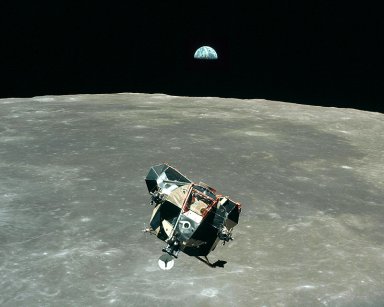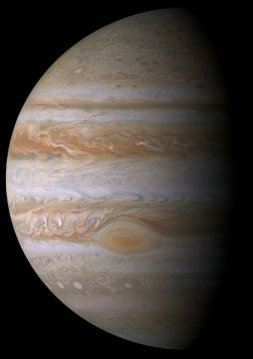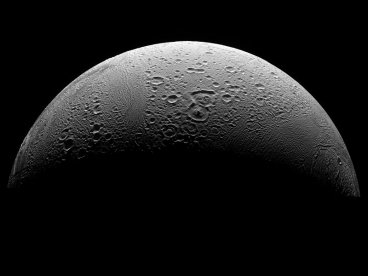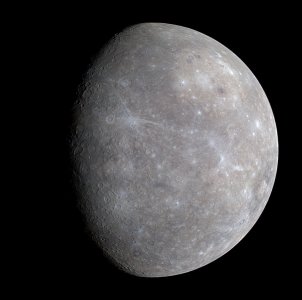 |
Sunday, 31 August 2014
3 Astronauts Who Had Spiritual Experiences ‘Up There’
Mood:
 lyrical
Topic: Space lyrical
Topic: Space

Several astronauts who have seen Earth from space have had profoundly awakening spiritual experiences. Here’s three of them. Seeing Earth from space will cause you to lose your shit. In Plato’s Phaedo, Socrates said that if you could see the Earth from space, you would recognize “that is the real heaven and the real light and the real earth.” Your eyes, no longer bound to the horizon, see the Earth both from space and in space. Your whole perspective shifts. What was once the endless expanse of blue sky now appears to be just a thin halo surrounding the planet. You can now see above the clouds to the changing atmosphere, raging thunderstorms, and auroras of the Northern and Southern hemispheres. One half of the planet turns dark and the continents light up with networks of cities. Everything appears interconnected. This view of Earth has only been in popular awareness since 1968, when the first color photographs were taken on the Apollo missions. It represents a major shift in consciousness. Twenty years earlier, the British Astronomer Fred Hoyle said that a photograph of Earth would be “a new idea as powerful as any in history.” Only around 500 astronauts have ever witnessed this view first hand. For some of these astronauts, seeing the Earth was a profound, life-changing, and outright mystical experience. Below, three astronauts recount their experiences of seeing Earth from space, and the profound effect it had on their perception. 1. Edgar Mitchell Mitchell seems to be the most vocal about his experience of seeing Earth from above. His experience left a profound spiritual impact on him. It was so impactful that he founded the Institute of Noetic Sciences in the Sonoma Valley, an institute that conducts research into meditation, consciousness and human potential. On his experience of seeing Earth from space, Mitchell has said: “That’s a powerful experience, to see Earth rise over the surface [of the Moon]. And I suddenly realized that the molecules in my body, and the molecules in the spacecraft and my partners had been prototyped, maybe even manufactured, in some ancient generation of stars. But instead of being an intellectual experience, it was a personal feeling… And that was accompanied by a sense of joy and ecstasy, which caused me to say ‘What is this?’ It was only after I came back that I did the research and found that the term in ancient Sanskrit was Samadhi.” 2. Russell L. Schweickart Schweickart flew on the Apollo 9 mission. Recounting his experience of looking down at Earth, he said: “You identify with Houston and you identify with New Orleans… And that whole process of what it is you identify with begins to shift. When you go around the Earth in an hour and a half, you begin to recognize that your identity is with that whole thing. That makes a change. You look down there and you can’t imagine how many border and boundaries you cross… and you don’t even see them. There you are—hundreds of people in the Mideast killing each other over some imaginary line that you’re not even aware of and you can’t see.” 3. Wubbo Ockels Ockel was the first Dutch citizen in space. He passed away last month. Before dying, he composed an open letter calling for sustainable energy solutions. The letter testifies to the spiritual impact his experience as an astronaut left on him: “We are not bees who unconsciously build a bee colony… We are not neurons that are not aware that they altogether think. No, we are intelligent beings that indeed can see and observe the behavior of our community. We are well aware of where our Humanity is heading. We can lead Humanity into a better direction if we act together. With a new believe in Humanity we can create a new religion that brings us all together. “There are many Religions who get people together, but never all people. The different gods in whom people believe separate Humanity… This separation has led to many conflicts… These religions do not unify humanity with the earth. They [are] not sustainable. But if we believe in the holistic Humanity we will have no conflicts because we will be inseparable… The God of humanity is in each of us. This God is not outside of us. We cannot hide behind this God because it is us.” About the Author Andrei Burke is a freelance writer who currently resides in the Los Angeles area.
Posted by Neil Bartlett DHyp M.A.E.P.H
at 00:01 MEST
Updated: Sunday, 31 August 2014 01:34 MEST
Thursday, 12 June 2014
Cosmic Journeys - The Search for Earth-like Planets
Mood:
 cool
Topic: Space cool
Topic: Space
This journey started tens of thousands of years ago, when humans began to fan out across the planet, following unknown pathways, crossing unmeasured distances. We traced coastlines, and sailed uncertain seas. We crossed ocean straits drained by an ice age. Into every corner of Earth we ventured, looking for places to put down our roots, to raise our families, or just to see what was there. Today, it's the final frontier that fires our imaginations. With so many stars in our galaxy, we make a simple extrapolation, that the cosmos must be filled with worlds like ours, with life, even intelligent life.
Posted by Neil Bartlett DHyp M.A.E.P.H
at 00:01 MEST
Updated: Thursday, 12 June 2014 01:16 MEST
Thursday, 15 May 2014
Hubble's Stunning Monkey Head Nebula
Mood:
 cool
Topic: Space cool
Topic: Space
Astronomers using the Hubble Space Telescope have captured infrared-light images of a churning region of a star birth 6,400 light-years away. New from Hubblecast. The collection of images reveals a shadowy, dense knot of gas and dust sharply contrasted against a backdrop of brilliant glowing gas in the Monkey Head Nebula (also known as NGC 2174). The image demonstrates Hubble's powerful infrared vision and offers a tantalizing hint of what scientists can expect from the upcoming James Webb Space Telescope. Observations of NGC 2174 taken in February, 2014.
Posted by Neil Bartlett DHyp M.A.E.P.H
at 00:01 MEST
Updated: Thursday, 15 May 2014 01:59 MEST
Saturday, 19 April 2014
Did JUPITER kickstart life on Earth?
Mood:
 happy
Topic: Space happy
Topic: Space

The alien world of Jupiter is more than 365 million miles (588 million km) away from what we experience on Earth. But despite this huge distance, astronomers have long believed the gas giant’s gravity is so strong it deflects comets and asteroids that would otherwise hit our planet. Now a new study has shed light on how this strong gravitational pull may have influenced Earth's climate and, in turn, created the conditions needed for life to thrive on our planet billions of years ago. Jupiter’s gravity, which is 2.5 times stronger than that of Earth's, is capable of pulling on other planets in the solar system - including our own. This means that, depending on how Jupiter interacts with Earth, our planet's orbit - and therefore its climate - could vary significantly. For example, if our planet is pulled closer to the sun, our climate would change as a result. Equally, if Jupiter's orbit caused Earth to move further away. The study, by the University of New South Wales and Royal Holloway University of London, ran various computer models of our solar system, according to a report by Elizabeth Howell in Astrobiology Magazine. With each iteration, the planets in the solar system remained in their place while Jupiter moved around in different obits, ranging from circular to elliptical. The scientists also moved the entire orbit of Jupiter inwards and outwards to test what would have happened if the planet had formed closer to the sun, or further away. Each simulation was taken through a million year time frame, recording where Earth would have been every 100 years as a result of Jupiter’s position. ‘The default assumption is this is something that is important,’ said Jonti Horner, an astronomer and astrobiologist at the University of Southern Queensland. Read more: dailymail.co.uk
Posted by Neil Bartlett DHyp M.A.E.P.H
at 00:01 MEST
Updated: Saturday, 19 April 2014 02:14 MEST
Tuesday, 15 April 2014
An Asteroid with Rings?
Mood:
 happy
Topic: Space happy
Topic: Space
Observations at a telescopes in South America have made the surprise discovery that the remote asteroid Chariklo is surrounded by two dense and narrow rings. This is the smallest object to have rings and only the fifth body in the Solar System — after the much larger planets Jupiter, Saturn, Uranus and Neptune — to have this feature. The origin of these rings remains a mystery, but they may be the result of a collision that created a disc of debris. The rings of Saturn are one of the most spectacular sights in the sky, and less prominent rings have also been found around the other giant planets. Despite many careful searches, no rings had been found around smaller objects orbiting the Sun in the Solar System. Now observations of the distant minor planet Chariklo as it passed in front of a star have shown that this object too is surrounded by two fine rings.
Posted by Neil Bartlett DHyp M.A.E.P.H
at 00:01 MEST
Updated: Tuesday, 15 April 2014 01:01 MEST
Sunday, 6 April 2014
Icy moon of Saturn has hidden ocean that could support life
Mood:
 lyrical
Topic: Space lyrical
Topic: Space

NASA scientists theorized the presence of water based on the gravitational tugs on the Cassini spacecraft. The icy Saturn moon Enceladus harbors a big ocean of liquid water beneath an icy crust that may be capable of supporting life as we know it, a new study reports. The water ocean on Enceladus is about 6 miles (10 kilometers) deep and lies beneath a shell of ice 19 to 25 miles (30 to 40 km) thick, researchers said. Further, it's in direct contact with a rocky seafloor, theoretically making possible all kinds of complex chemical reactions — such as, perhaps, the kind that led to the rise of life on Earth. "The main implication is that there are potentially habitable environments in the solar system in places which are completely unexpected," study lead author Luciano Iess said in a video about the discovery produced by his home institution, Sapienza University in Rome. "Enceladus has a surface temperature of about minus 180 degrees Celsius [minus 292 degrees Fahrenheit], but under that surface there is liquid water." The new finding, which was published online on April 3 in the journal Science, doesn't exactly come out of left field. Rather, it confirms suspicions many researchers have had about Enceladus since 2005, when NASA's Cassini spacecraft first spotted ice and water vapor spewing from fractures near the moon's south pole. Measuring Enceladus' gravity Iess and his colleagues mapped out Enceladus' gravity by measuring how the 313-mile-wide (504 km) moon tugged on Cassini during three close flybys from 2010 to 2012. "As the spacecraft flies by Enceladus, its velocity is perturbed by an amount that depends on variations in the gravity field that we're trying to measure," co-author Sami Asmar, of NASA's Jet Propulsion Laboratory in Pasadena, Calif., said in a statement. "We see the change in velocity as a change in radio frequency, received at our ground stations here all the way across the solar system." This ultra-precise tracking system — NASA's Deep Space Network can tell if Cassini speeds up or slows down by just 1 foot (0.3 meters) per hour — revealed the presence of a "negative mass anomaly" at Enceladus' south pole. In other words, the area harbors less mass than would be expected for a perfectly spherical body. That makes sense, because a large depression marks the south pole's surface, researchers said. But the observed mass anomaly is significantly smaller than expected based on the size of the dent (about 0.6 miles, or 1 km deep). The researchers thus concluded that "extra" mass underground must be reducing the effect. A subsurface ocean of liquid water, which is denser than ice, is the only reasonable candidate, they said. Read More - mnn.com
Posted by Neil Bartlett DHyp M.A.E.P.H
at 00:01 MEST
Updated: Sunday, 6 April 2014 01:12 MEST
Monday, 24 March 2014
Opportunity Knocks... 10 Years Later
Mood:
 chatty
Topic: Space chatty
Topic: Space
What was supposed to be a 90 day mission has lasted an astounding 10 years. See the incredible rover, Opportunity, and the brilliant scientists keeping her alive and well, with a steady stream of useful scientific data coming in on a daily basis.
Posted by Neil Bartlett DHyp M.A.E.P.H
at 00:01 MEST
Updated: Monday, 24 March 2014 03:08 MEST
Thursday, 20 March 2014
Wrinkled Mercury's shrinking history
Mood:
 bright
Topic: Space bright
Topic: Space

The planet Mercury is about 7km smaller today than when its crust first solidified over four billion years ago. The innermost world has shrunk as it has cooled over time, its surface cracking and wrinkling in the process. Scientists first recognised the phenomenon when the Mariner 10 probe whizzed by the planet in the mid-1970s. But the latest images from the US space agency's Messenger satellite have enabled researchers to refine their estimate for the amount of contraction. And, as they report in the journal Nature Geoscience, it is significantly more than previously realised. Mariner made two passes of Mercury, in 1974 and 1975, photographing about 45% of the planet's surface. Evident in those pictures were long scars where rock had been thrust upwards as the body shortened. These lobate scarps, as they are known, typically run for hundreds of kilometres, and separate terrains that can differ in height by thousands of metres. From the Mariner evidence, researchers calculated Mercury must have decreased its radius by about 1-3km over its history. But that figure was in conflict with modelling studies that suggested a cooling object like Mercury should have contracted much more in four billion years. Messenger helps to resolve the inconsistency. Since entering into orbit in 2011, it has photographed 100% of the planet. This has allowed for a more extensive study of the scarp features and the more subtle wrinkled ridges that also criss-cross its surface. The new assessment now brings the observed shrinkage - a reduction in radius of 7km - into the realm expected by the models. Read More - BBC
Posted by Neil Bartlett DHyp M.A.E.P.H
at 00:01 MEST
Updated: Thursday, 20 March 2014 02:14 MEST
Sunday, 16 March 2014
Cosmic Journeys : Reinventing Space Flight
Mood:
 a-ok
Topic: Space a-ok
Topic: Space
Follow Dr. Ben Longmier and his team into the rugged Alaskan wilderness on a quest to build a whole new type of rocket engine. Their goal is to test sensitive components by launching them into radiation-filled environments of space aboard helium balloons. Their goal is to revolutionize space travel and exploration by harnessing the energy contained in the dynamic fourth state of matter: plasma. This action-packed episode explores a big dream at the moment of its birth... taking us along to witness dramatic balloon launches on mountain glaciers, spectacular imagery inside the Sun, and flights through colorful geomagnetic storms.
Posted by Neil Bartlett DHyp M.A.E.P.H
at 00:01 MEST
Updated: Sunday, 16 March 2014 02:53 MEST
Saturday, 1 March 2014
Unlikely Planetary Treasure Trove
Mood:
 lyrical
Topic: Space lyrical
Topic: Space
News from ESO. Planet hunters have discovered three planets orbiting stars in the cluster Messier 67. Although more than one thousand planets outside the Solar System are now confirmed, only a handful have been found in star clusters. Remarkably one of these new exoplanets is orbiting a star that is a rare solar twin — a star that is almost identical to the Sun in all respects. Planets orbiting stars outside the Solar System are now known to be very common. These exoplanets have been found orbiting stars of widely varied ages and chemical compositions and are scattered across the sky. But, up to now, very few planets have been found inside star clusters. This is particularly odd as it is known that most stars are born in such clusters. Astronomers have wondered if there might be something different about planet formation in star clusters to explain this strange lack. This cluster lies about 2500 light-years away in the constellation of Cancer (The Crab) and contains about 500 stars. Many of the cluster stars are fainter than those normally targeted for exoplanet searches. Of three new planets, two are orbiting stars similar to the Sun and one is orbiting a more massive and evolved red giant star. The first two planets both have about one third the mass of Jupiter and orbit their host stars in seven and five days respectively. The third planet takes 122 days to orbit its host and is more massive than Jupiter. The first of these planets proved to be orbiting a remarkable star — it is one of the most similar solar twins identified so far and is almost identical to the Sun. It is the first solar twin in a cluster that has been found to have a planet. Two of the three planets are "hot Jupiters" — planets comparable to Jupiter in size, but much closer to their parent stars and hence much hotter. All three are closer to their host stars than the habitable zone where liquid water could exist.
Posted by Neil Bartlett DHyp M.A.E.P.H
at 00:01 CET
Updated: Saturday, 1 March 2014 01:15 CET
Newer | Latest | Older
|
| « |
April 2024 |
» |
 |
| S |
M |
T |
W |
T |
F |
S |
|
1 |
2 |
3 |
4 |
5 |
6 |
| 7 |
8 |
9 |
10 |
11 |
12 |
13 |
| 14 |
15 |
16 |
17 |
18 |
19 |
20 |
| 21 |
22 |
23 |
24 |
25 |
26 |
27 |
| 28 |
29 |
30 |
|





